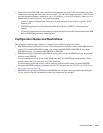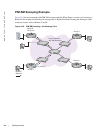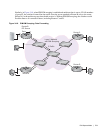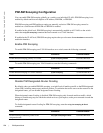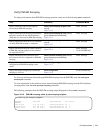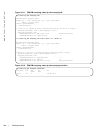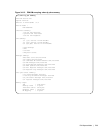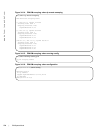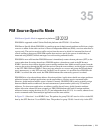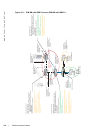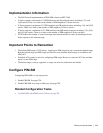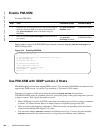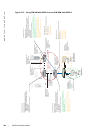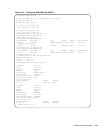PIM Source-Specific Mode | 777
35
PIM Source-Specific Mode
PIM Source-Specific Mode is supported on platforms: c e s
PIM-SSM is supported on the E-Series ExaScale platform with FTOS 8.1.1.0 and later.
PIM-Source-Specific Mode (PIM-SSM) is a multicast protocol that forwards multicast traffic from a single
source to a subnet. In the other versions of Protocol Independent Multicast (PIM), a receiver subscribes to
a group only. The receiver receives traffic not just from the source in which it is interested but from all
sources sending to that group. PIM-SSM requires that receivers specify the sources in which they are
interested using IGMPv3 include messages to avoid receiving unwanted traffic.
PIM-SSM is more efficient than PIM-SM because it immediately creates shortest path trees (SPT) to the
source rather than first using shared trees. PIM-SM requires a shared tree rooted at the RP because
IGMPv2 receivers do not know about the source sending multicast data. Multicast traffic passes from the
source to the receiver through the RP, until the receiver learns the source address, at which point it switches
to the SPT. PIM-SSM uses IGMPv3. Since receivers subscribe to a source and group, the RP and shared
tree is unnecessary, so only SPTs are used. On Dell Force10 systems, it is possible to use PIM-SM with
IGMPv3 to achieve the same result, but PIM-SSM eliminates the unnecessary protocol overhead.
PIM-SSM also solves the multicast address allocation problem. Applications should use unique multicast
addresses because if multiple applications use the same address, receivers receive unwanted traffic.
However, global multicast address space is limited. Currently GLOP/EGLOP is used to statically assign
Internet-routable multicast addresses, but each autonomous system number yields only 255 multicast
addresses. For short-term applications, an address could be leased, but no global dynamic multicast
address allocation scheme has been accepted yet. PIM-SSM eliminates the need for unique multicast
addresses because routing decisions for (S1, G1) are independent from (S2, G1). As a result, subnets do not
receive unwanted traffic when multiple applications use the same address.
In Figure 35-1, Receiver 1 is an IGMPv2 host. The packets for group 239.0.0.2 travel to it first via the RP,
then by the SPT. Receiver 2 is an IGMPv3 host. The packets for group 239.0.0.1 travel only via the STP.



